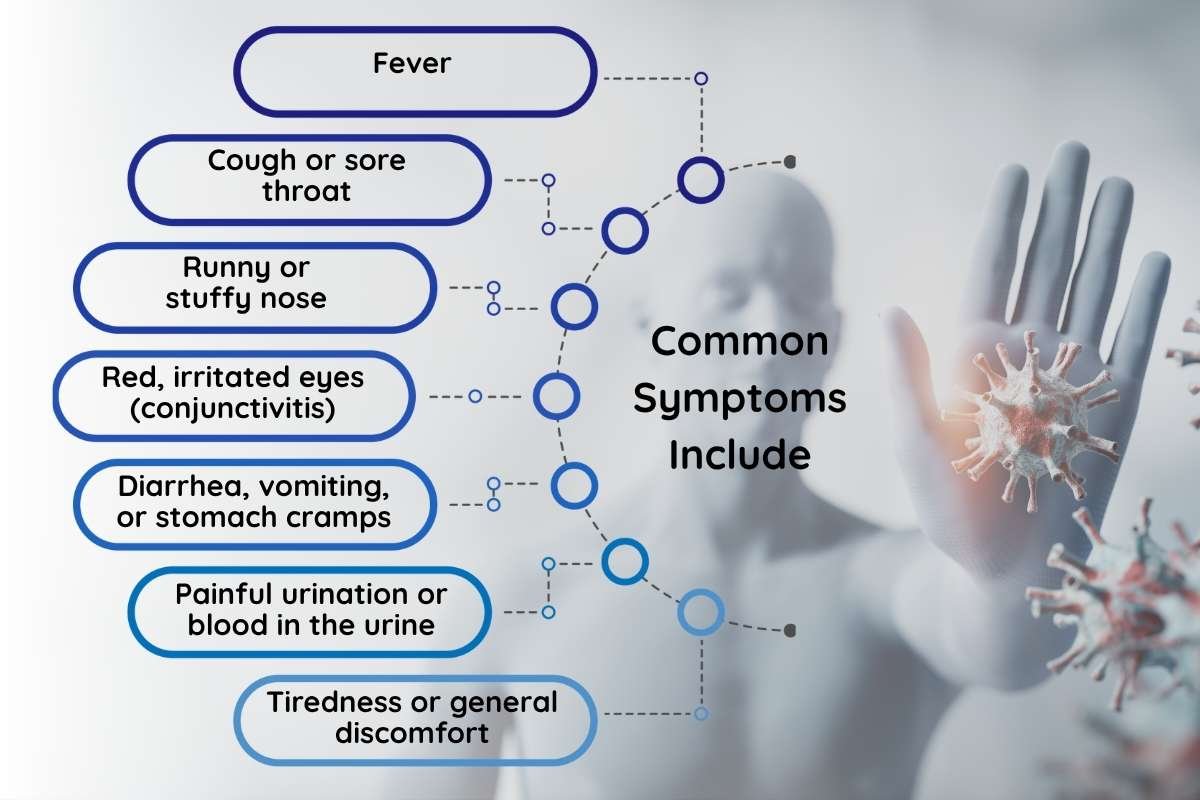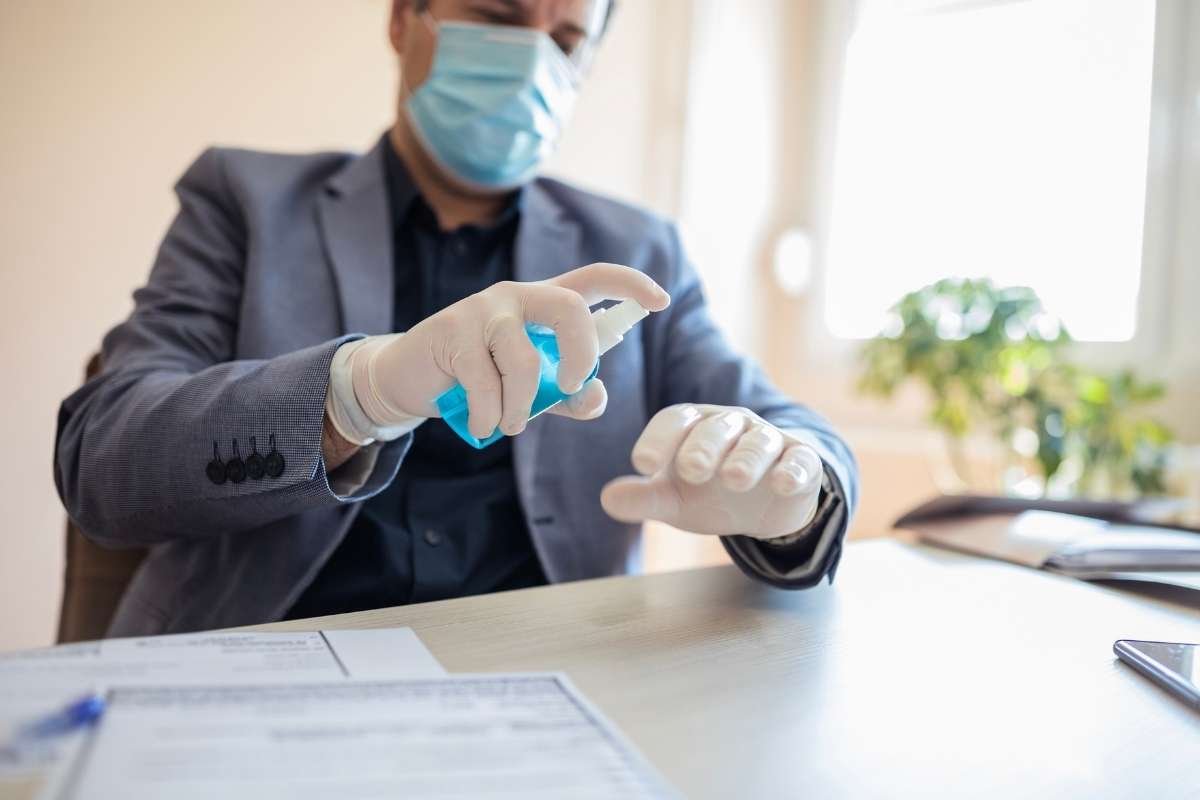Waking up with a cold, cough, or sore throat is one of the worst feelings. It feels like you’re getting choked. However, sometimes, certain viruses seem like a regular flu but leave severe aftereffects. So, have you ever heard of the adenovirus? It isn’t just one virus; it’s a large group of viruses that can affect the body in many ways, especially in children and people with weak immune systems. It’s one of the most common viral infections worldwide, but it often flies under the radar despite how widespread it is.
Unlike seasonal viruses like the flu, it doesn’t wait for winter. It can strike at any time of year and linger in the body even after symptoms go away. Let’s look at what adenovirus is, how it spreads, and how you can protect yourself and your loved ones.
Understanding The Virus

Adenovirus is a group of viruses, more than 50 known to infect humans, that can cause a wide range of illnesses. These include respiratory infections, gastrointestinal issues, pink eye (conjunctivitis), bladder infections, and even neurological symptoms in severe cases.
It’s especially common in young children because of their developing immune systems and close contact in schools and daycare centers. However, adults can catch it, too, and people with weakened immunity are at greater risk for serious complications.
Unlike many viruses that die quickly outside the body, this virus is unusually hardy. It can survive on surfaces like doorknobs, countertops, and towels for days, making it highly contagious in shared spaces.
Symptoms To Watch Out For
The symptoms of adenovirus vary depending on which part of the body the virus affects. While most infections are mild, some can lead to more serious health issues.
In rare cases, especially in people with weakened immune systems, the virus may lead to pneumonia, hepatitis, or even nervous system infections.
Symptoms typically appear 2–14 days after exposure and can last from a few days to more than a week. Some people may recover quickly, while others, particularly children, can experience lingering fatigue and cough.
Common symptoms include:

- Fever
- Cough or sore throat
- Runny or stuffy nose
- Red, irritated eyes (conjunctivitis)
- Diarrhea, vomiting, or stomach cramps
- Painful urination or blood in the urine
- Tiredness or general discomfort
How It Spreads So Easily Without Being Noticed ?
You don’t need to be coughing or sneezing to pass it on. Just touching a shared surface, shaking hands, or swimming in a poorly chlorinated pool can be enough. The virus lives in environments where hygiene is hard to maintain, like shared bathrooms, gym equipment, or toys in a daycare classroom.
Children are perfect carriers, often shedding the virus in their stool for weeks after infection. Without proper handwashing, it finds its way onto objects and others’ mouths or eyes. The virus has led to dangerous outbreaks in hospitals or elder care facilities, especially when weakened immune systems can’t fight back effectively.
Due to its complex structure, everyday cleaning products may not always eliminate adenovirus. That’s why handwashing with soap and warm water remains the best defense, something that alcohol-based sanitizers alone may not always accomplish effectively.
Who’s at Greater Risk?
While healthy adults typically recover without much fuss, adenovirus can be dangerous for specific groups. Infants and toddlers, especially those under six months, may struggle more because their immune systems aren’t fully developed. Older adults, particularly those with chronic illnesses like heart or lung conditions, also face a higher risk of complications.
Immunocompromised patients, such as those undergoing chemotherapy or living with HIV, are especially vulnerable. In these cases, adenovirus can spread beyond the lungs or gut to the liver, brain, or bloodstream, causing life-threatening infections. This is why strict hygiene and early diagnosis are essential in hospitals or treatment centers.
Preventing the Spread

Despite how contagious adenovirus is, preventing it isn’t impossible. It starts with good habits. Handwashing remains one of the most effective tools. Avoiding close contact with infected individuals, especially those with visible pink eye or heavy coughs, can reduce your chances of catching the virus.
Teaching children not to rub their eyes and sneeze into a tissue or their elbow makes a huge difference. Surfaces like doorknobs, toys, and shared devices should be cleaned regularly with disinfectants that kill non-enveloped viruses.
Interestingly, there is a vaccine, but it’s unavailable to the general public. It’s approved only for U.S. military personnel to prevent specific strains commonly circulated in crowded training camps. Researchers are exploring wider vaccine options, but prevention depends mainly on personal care and hygiene.
How Is Adenovirus Treated?
Most people do not have specific antiviral medication for adenovirus. Treatment is typically supportive, managing the symptoms until the body fights off the virus naturally. Doctors might use antiviral medications like cidofovir in rare, severe cases, especially in immunocompromised individuals. These are reserved for life-threatening infections and come with risks of their own. Most people recover within 7 to 10 days, though a lingering cough or fatigue might last longer.
Common approaches include:
- Rest and fluids to avoid dehydration
- Fever reducers like acetaminophen or ibuprofen
- Saline nasal sprays or humidifiers for congestion
- Eye drops or compresses for pink eye
- Rehydration solutions in case of vomiting or diarrhea
Conclusion
Summing up the conversation about viruses, adenovirus is a stealthy one with quiet persistence that requires understanding. It doesn’t just come and go with the seasons and doesn’t always show up the same way. One person might have watery eyes, a hacking cough, and vomiting. These are among the crucial reasons to stay informed.
Most cases are mild and manageable, but their potential to cause serious illness in certain groups can’t be ignored. Knowing how adenovirus spreads and how to contain it can prevent larger outbreaks and protect the vulnerable in homes, schools, and hospitals.
Frequently Asked Questions (FAQs)
Q. Is adenovirus dangerous?
A. In most healthy people, no. However, it can be serious in babies, older adults, and people with weak immune systems.
Q. Can I get it more than once?
A. Yes. There are many adenovirus types; getting one doesn’t protect you from the others.
Q. How long does it last?
A. Symptoms usually last 7 to 10 days, but some effects (like cough or fatigue) can linger.
Q. Is there a vaccine for adenovirus?
A. A vaccine exists for military use but is not available to the general public.
Q. How can I tell if I have adenovirus or just a cold?
A. You often can’t without a lab test. If symptoms are severe or involve the eyes or stomach, it may point toward adenovirus.









